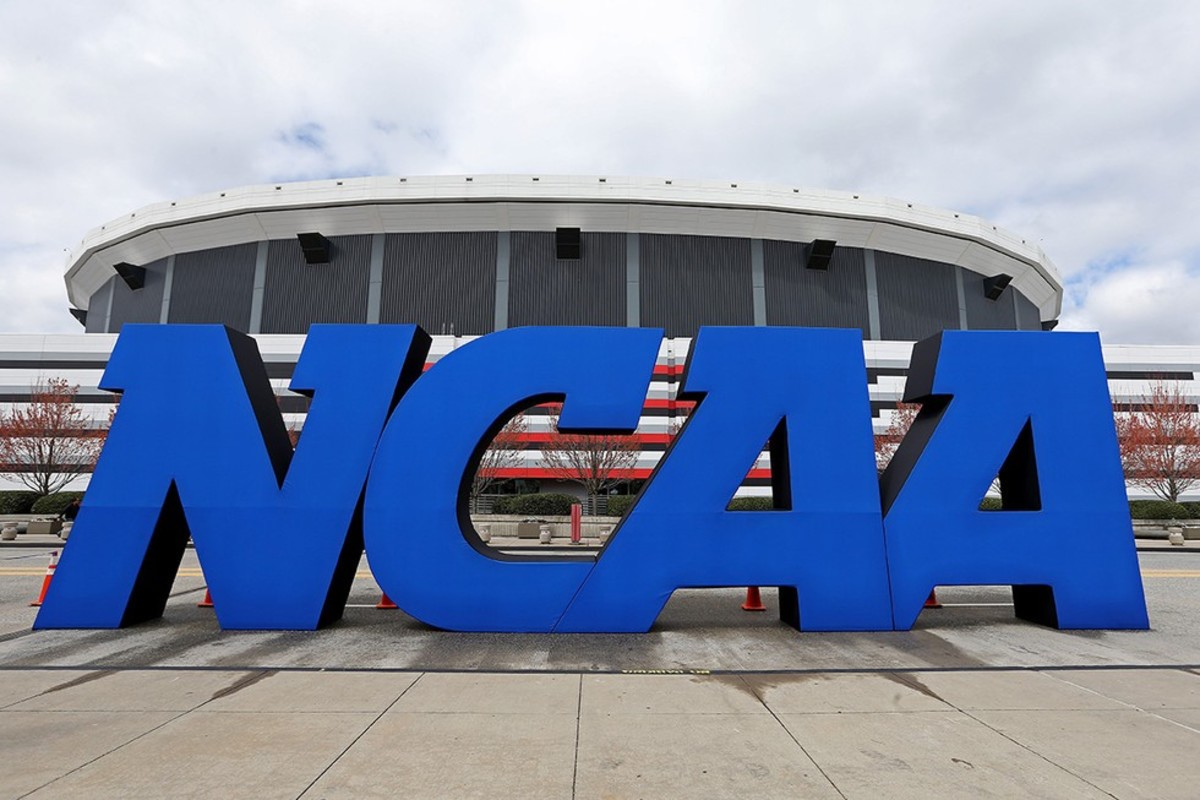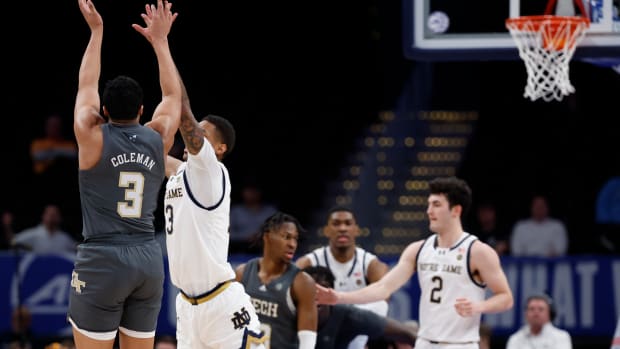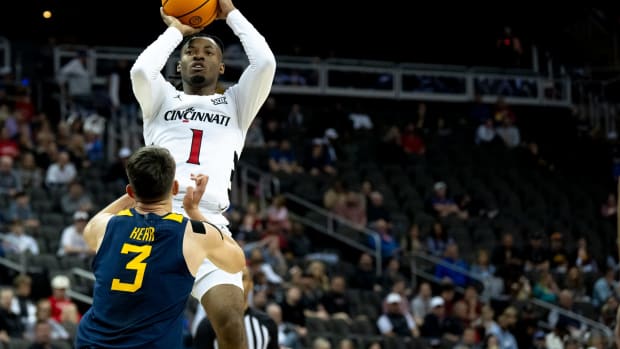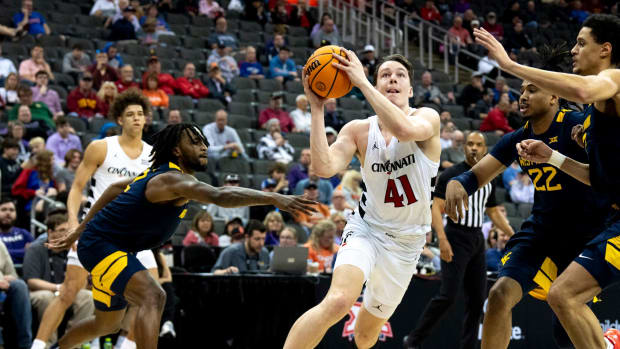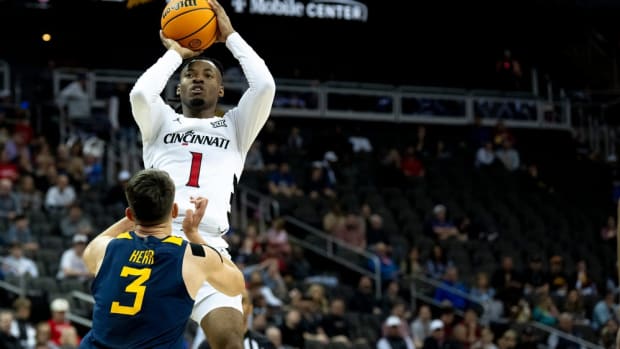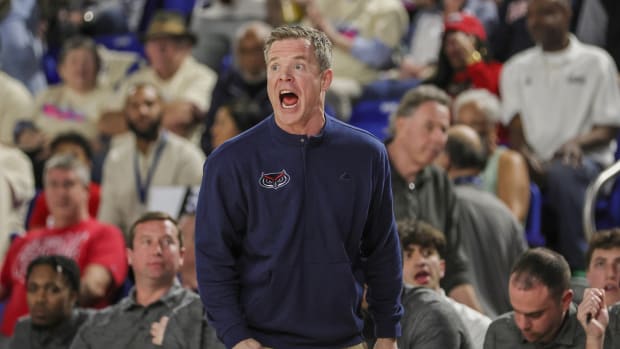Selection Sunday Q&A: Dispelling Selection Committee myths & picking snubs and surprises for the Big Dance
[video: 13724953]
It's the biggest weekend of the college basketball season—at least, until next weekend. So I figured I should get your mind right by providing this Selection Sunday primer. Allow myself to introduce ... myself.
Isn't this going to be the most wide-open NCAA tournament ever?
This is going to be the most wide-open NCAA tournament since ... last year. I realize this is counter to the prevailing narrative, and it has been a crazy season at the very top of the national polls.
Beyond that, things are pretty much standard fare. No, there is not a single dominant team this season like Kentucky was entering the tourney last year, but if you made a short list of schools that have a real shot at winning the national championship, you would include a lot of the usual suspects. Kansas, Michigan State and Villanova are at the top of the polls, with traditional bluebloods like North Carolina, Indiana, Arizona and Kentucky lurking behind. The other potential party crashers in the mix (Miami, Utah, Oregon, Oklahoma) don't have quite the same hoops pedigree, but they hardly conjure up images of Cinderella.
In fact, one storyline that has been lost this season is the relative weakness of some of the stronger mid-major programs. Wichita State and Gonzaga appeared in the preseason rankings, but both fell out quickly and stayed out for much of the season. San Diego State has dominated the Mountain West but was awful in nonconference play early going. Even Dayton slid in the last month.
I'm sure (or at least I'm hoping) that a mid-major or two no one is talking about will break through and win a game or two in the tournament. Beyond that, my expectation is that things will follow the usual formula: Some upsets early, some cool storylines to latch onto, but as we advance from round to round, the cream will rise, and the last team standing will feel old and familiar.
But this is definitely the worst bubble ever, right?
This is the worst bubble since ... last year.
How quickly we forget! The only difference is that this year we have two slots that would otherwise be unavailable, thanks to postseason bans levied on Louisville and SMU. We also have a lot of really good candidates, especially at the mid-major level. Normally, I am holding my nose when I fill out the last few at-large spots. This year, I'm looking for ways to shoehorn teams in. Of course, when we're talking the last 8 to 10 at-large spots, all the teams have glaring flaws. That's why they're on the bubble.
Rich Schulz/Getty
So who are the most interesting bubble teams—and which ones will get in?
We have a fascinating quartet of mid-major darlings vying for at-large bids: Monmouth, Saint Mary's, Valparaiso and Wichita State. These are all conference regular season champions that were either ranked at some point this season or at least listed in "others receiving votes." Yet, because they were tripped up during their conference tournaments, they have found themselves in the at-large pool.
The only thing I know for sure is that not all four will get in. I am reasonably confident that at least one will. Which one is anybody's guess, but we should keep in mind the subjectivity in this process. If I were on the committee, I would weigh significant wins more than bad losses. (Like I said, every bubble team has bad losses.) I would also put a big emphasis on how a team performs away from home (especially in true road games) and whether that coach stepped up and played a challenging nonconference schedule. Based on that, here's how I would rank the four:
1. Monmouth (27–7, 17–3 MAAC). They have three wins away from home against tournament teams—Notre Dame and USC (neutral), and Iona (road). Overall, the Hawks have 13 true road wins plus four neutral court wins. That's a lot. And I'm not so quick to just toss away those road wins at UCLA and Georgetown. Those are not easy games to win. On the flip side, Monmouth also lost three games to teams ranked below 200 in the RPI. That is also a lot. All were on the road, but those are still bad losses.
2. Wichita State (24–8, 16–2 MVC). Not many schools would merit discussion with a résumé like this. The Shockers have only one top-50 win, and that came at home against Utah on Dec. 12. The reason the Shockers are being considered is because a) three of their eight losses were played without senior guard Fred VanVleet b) they played the 11th-toughest nonconference schedule in the country 3) they only have one sub-100 loss at Illinois state and 4) they have some of the players who were pivotal in their success the last three years, including an appearance in the Final Four in 2013. So they do well on the eye test.
3. Saint Mary's (27–5, 15–3 WCC). RPI guru Jerry Palm points out that a team has never gotten an at-large bid after playing more than half its games against schools ranked 200 or below in the RPI, which is what Saint Mary's did this season. The Gaels swept Gonzaga en route to winning the regular season WCC title and only lost five games all season but lost to the Bulldogs when it matters most, in the WCC title game. I'm just not sure there's enough meat on this bone.
4. Valparaiso (26–6, 16–2 Horizon). I've been voting the Crusaders onto my top 25 ballot the last month or so, so I'd love to make the case that they deserve inclusion. They do have a Nov. 24 road win at Oregon State to their credit, but is that as good as Wichita State beating Utah at home? I think not. Valpo also lost four games to teams ranked below 100. So it's a tough case.
Wait, isn't Wichita State ranked 11th in the Ken Pomeroy efficiency rankings? Shouldn't that mean they're a three-seed?
Uh, not exactly. I won't pretend I'm smart enough to understand all the differences between Pomeroy's efficiency rankings and all the other metrics, but I do know that Wichita State's rank in the RPI (47) is a far better reflection of where it stands in the basketball universe. To me, this should be a final verdict that the more useful metrics are the ones that do not take into account anything other than wins and losses (with extra weight given to road games). But I invited Pomeroy to submit via email his own explanation for why the Shockers are ranked so much higher on his board than in other rankings. He pointed out that his system takes into account overall strength of schedule, and he also makes a compelling argument when he compares Wichita State to middle-of-the-standings power conference teams like Wisconsin and Texas Tech:
"Nobody should just use one system to make a judgment," Pomeory wrote. "My system is an outlier to some degree on Wichita. The most reasonable thing to do would be to look at a bunch of systems. There are many other people doing good work with ratings. Almost all systems say that Wichita State is one of the 36 best at-large teams. The few that don't are looking strictly at a team's résumé. And the Shockers might be ranked differently in those systems if they had the opportunities that Wisconsin or Texas Tech did late in the season.
"It's a bit unfair to give Wisconsin and Texas Tech bids over Wichita State when they had the opportunities to play top-50 teams every night in February and March when they were finally playing their best. Give Wichita State 12 top-50 games, with half of them at home, and they almost surely would have won three of them. Conversely, give Texas Tech or Wisconsin 18 consecutive games against teams outside the top 80, and they will lose occasionally."
But doesn't margin of victory count for something?
Nope. Nor should it. Yes, if a team wins a game by 30, that is much different than winning a game by one. But that is rarely, if ever, the case on a decisive matter. The committee members watch a ton of games, and they are more than welcome to rely on the so-called eye test. But from everything I've ever been told, when they are discussing teams and schedules and results, they never bring up margins of victory. To them, it's the same logic that applies to conference standings: A win by 30 "counts" the same as a win by one. And even if they can take overall competitiveness into account when they apply the eye test, I hope they never endorse the idea of including that margin into their own official metric. The last thing we need is college basketball coaches trying to run up scores in hopes of improving their NCAA tournament seeding.
Frederick Breedon/Getty
Who could be this year's UCLA?
The Bruins were the surprise entrant last year. They really had no business getting a bid, given that they had just one top-100 road win and were 2–8 against the top 25. After much criticism of their selection, they went on to make the Sweet 16.
We never see these things coming, but if I'm forced to look for a surprise, I'd go with Florida (19–13, 9–9 SEC). Yes, the Gators lost nine SEC games during the regular season, but they had two really good nonconference wins, at home over West Virginia on Jan. 30 and on a neutral court over Saint Joseph's on Nov. 21. And they only have one loss on their entire schedule to a team ranked below 100. If they could win their Friday game against Texas A&M in the SEC tournament, the Gators will get an even longer look.
Who could be this year's SMU (2014)?
The Mustangs were the big surprise omission that year, largely because they did not have a good nonconference schedule. So when I wanted to look for candidates from this season, I went to the bottom of the nonconference SOS rankings and scrolled up.
The first team I found that is thought to be "safely in" is South Carolina. The Gamecocks' nonconference strength of schedule is ranked 267th in the RPI. Not fatal, but not good. Moreover, the SEC did not help them as much as they would have liked. They have just two wins over teams ranked in the top 50 (though one was a true road game at Texas A&M on Feb. 6), but they also have three losses below 100, including an unsightly one at No. 220 Missouri on Feb. 16.
But why do they make such a big deal about nonconference strength of schedule. Is that really fair?
Not only is it fair, it's necessary for the overall health of the game.
If the selection committee did not emphasize this portion of a team's schedule, then the power conference biggies would have no incentive to play good teams away from home. (Remember, there is also a financial incentive for teams to load up on home games. They make a lot of dough off those events.) That would be patently unfair to mid-majors and low-majors. The other ripple effect would be to render November and December boring and meaningless. It is already a challenge for college basketball to attract eyeballs during football season. Imagine how much harder it would be if we didn't have so many compelling games, including the exempt events that allow teams of various levels to square off against each other for three games on a neutral floor.
When it comes to filling the at-large spots, is the committee looking for the 36 best teams, or the 36 most deserving?
The official policy is to pick the 36 best. However, I think the folks on the committee approach their task with a healthy dose of humility. There is so little difference between teams, especially when they are handing out the last few at-large bids. So while they may think Team A is better than Team B, they almost always defer to which team actually has the better résumé. Teams have more than enough opportunities to prove themselves worthy of inclusion. It wouldn't be right to reward teams that didn't win enough quality games just because someone thinks they might be better than another team that has done its work.
Getty Images file
Do we have to wait until we see the NCAA tournament results to weigh in on whether the committee did a good job?
This is one of the great fallacies, and I am sure we are going to hear it over and over. It is the committee's job to assess the teams based on what has happened over the previous four months. It is not their job to predict results. Whatever happens during the NCAA tournament does not validate or invalidate their decisions. And yes, that includes in 2011, when the committee incurred much criticism because it gave VCU a berth into the First Four. That the Rams went on an amazing dash to the Final Four does not change what happened during the regular season.
The same applies to evaluating conferences. It has been quite obvious all season that the Big 12 is far and away the best league in the country (and the best league we have seen in a long while). Yet, if a few of those teams lose to lower-seeded teams the first weekend, you will hear plenty of prattle saying the league was "overrated." Don't engage in that. You're way too smart.
What do the S curve and a purple unicorn have in common?
Neither exists. This is usually the thing that most surprises members of the media when they are put through the NCAA's mock selection exercise. For some reason, many people have come to believe that the committee places teams in the bracket along an "S curve" model, whereby the No. 5 overall seed is placed in the same region as a 1-seed as the No. 4 overall team, which gets the 2-seed, and right on down the line. Balderdash. The bracketing decisions are made primarily on geography. The higher a team is on the overall seed chart, the more preference it gets when it comes to placement in a region. As the committee works its way down the seed line, some other principles come into play, mainly the restriction against allowing teams from the same conference to meet before the regional finals (unless there are more than eight teams from the same league in the tournament, which will not happen this year). But for the most part, geography dictates this process.
There are a couple of wrinkles to add. First, as the committee places teams along the top four lines, the software they use keeps tally of the total number on the seed line. In other words, if the East region has the overall 1, 6, 9 and 12, the number 28 will appear at the bottom. Then the committee can compare that number with the one at the bottom of the other three regions. If it looks really out of whack, they can make an adjustment. Most of the time, they leave well enough alone.
Finally, there is a minor S-curve logic applied to the No. 5 and No. 6 overall seeds. The committee will try not to place them in the same region as the overall No. 1. But in terms of an overall S-curve, it simply does not exist.
Is this the year that a No. 16 seed finally beats a No. 1?
I am tempted on occasion to predict this to happen on the Selection Show, if only because if I turned out to be right, I could drop the mic and never be heard from again. I think we all sense that it is a matter of when, not if. It's just about that last thing in sports that hasn't happened yet, and we've had enough close calls over the year to understand that it's coming.
Frankly, I've long argued that the attention paid to the No. 1 seeds is way out of proportion with the relevance of that designation. I've seen the numbers indicating how well the No. 1 seeds do, but the obvious reason is that the best teams are over the long-term going to perform the best. Earning a No. 1 might get a team a slightly easier game in the first round, but after that the thing is a crapshoot. There are precious few "easy" games in the NCAA tournament, even for the best teams in the country.
Still, it's a nice honor for a team to earn a No. 1 seed. I can understand why the coaches, players and fans want it so much. The only sure No. 1 seed right now is Kansas, which is so far ahead of the pack that even if it doesn't win another game, it will be the overall No. 1 seed in the tournament. Elsewhere, I believe the other three seeds will come from a combination of, in order: Villanova, Oklahoma, Virginia, North Carolina and Michigan State. It may seem odd that Virginia is ahead of North Carolina considering the Tar Heels won the ACC regular season title outright, but partly because of imbalanced league scheduling, the Cavaliers actually have the better argument (in my opinion) to be a No. 1 seed.
Either way, the ACC tournament is likely to settle the argument. In fact, by the time the Selection Committee completes its work on Sunday afternoon, all of the arguments will be settled. Then the arguing can really begin.
